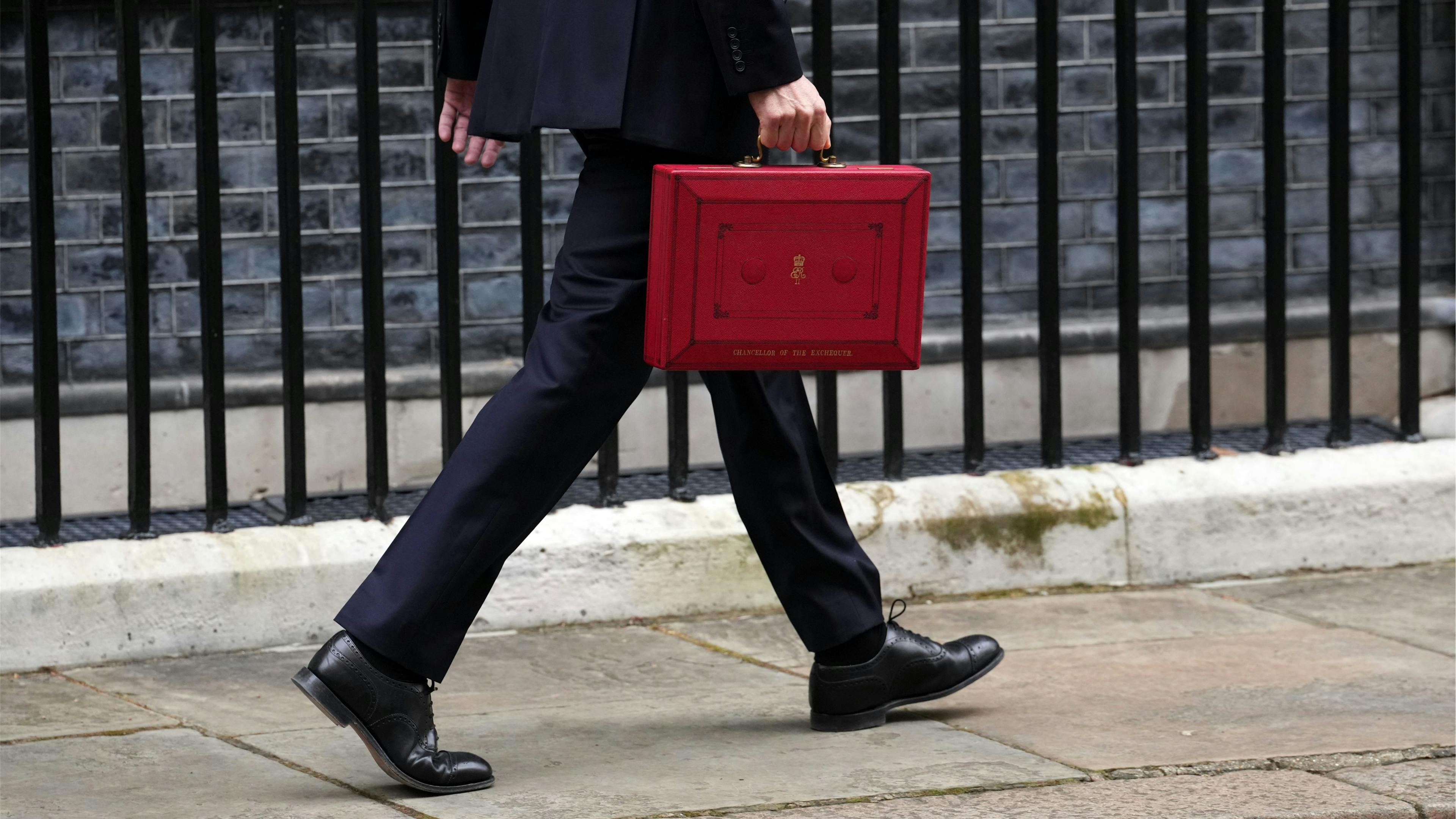It doesn’t matter until it does: Widening US fiscal cracks

At a glance
- Elevated treasury yields, weaker safe-haven demand for treasuries and the dollar, and gold decoupling from real yields all signal fiscal unease.
- Persistent fiscal excess at a time of full employment suggests the problem is now structural, not cyclical.
- Higher real yields and term premia are compounding the fiscal burden and could reinforce deficit pressures.
- Overseas appetite for treasuries is declining - driven by trade realignment, geopolitics, and diversification away from the dollar.
- By avoiding tough fiscal choices, policymakers are more likely to resort to unorthodox tools like financial repression and monetary accommodation.
- A debt crisis may not be imminent, but risks from the US debt trajectory are building and already spilling over into markets.
It doesn’t matter until it does: Widening US fiscal cracks
Since the Global Financial Crisis (GFC), rising US government debt has been an occasional concern for markets and investors. Debt ceiling standoffs, government shutdowns, and credit downgrades have triggered moments of alarm, but none have escalated into a full-blown crisis. Recently a growing number of market signals and trends suggest the unease with the US fiscal backdrop is once again building, with a step up in the level of concern relative to previous episodes.
What is the market telling us?
Despite slowing economic growth, moderating inflation, and a dovish tilt from the Federal Reserve (Fed), 10-year treasury yields have remained stubbornly elevated since 2022 and driven increasingly by the return of term premia to the yield curve. In September of last year, when the Fed began its rate-cutting cycle, 10-year US yields rose sharply - an unusual response relative to historical analogues. 30-year yields have breached levels not seen since before the global financial crisis.
This year both US treasuries and the US dollar have uncharacteristically failed to provide their traditional safe-haven protection during periods of equity market volatility.
Looking back to 2022 the market was already signalling its unease, when the conventional inverse relationship between real US treasury yields and the price of gold broke down. Investors appear increasingly willing to accept the opportunity cost of holding gold—even as real yields rise—suggesting a shift in market preferences and a reassessment of risks.
While each of these developments might be rationalised individually, taken together they point to mounting concerns over the long-term fiscal trajectory of the United States.
US 10-year real treasury rate vs gold price ($)

Source: US Treasury, World Gold Council, Macrobond
It is dangerous to claim that this time is different from the previous short-lived scares. While the timing of any crisis episode is unpredictable and probably not imminent, there are growing signs and reasons to believe the fiscal cracks are widening. To be clear, we are not talking about a default - countries that issue their own currency and control their tax system only default by choice. A more plausible scenario might resemble the UK's experience following the Truss-Kwarteng mini-budget: severe market disruption, but relatively short-lived once policy makers intervene and fiscal policy undergoes a course correction.
There are perhaps four key reasons why we have seen a step up in risk and market consequences recently, relative to the previous episodes. First, there is growing recognition that the United States’ large budget deficits are becoming structural rather than cyclical. Second, the rising cost of debt is not only adding to the fiscal burden but also introducing negative feedback loops. Third, foreign investor appetite for US treasuries appears to be waning. Fourth - and perhaps most significantly - addressing the fiscal challenge may now demand a shift toward more unconventional and potentially disruptive policy measures.
The transition to structural deficits
The level of US debt-to-GDP rose sharply following the Global Financial Crisis and surged again during the COVID pandemic. As a result of emergency fiscal measures, publicly held debt-to-GDP climbed to c.100%, beyond the 90% threshold that academic literature often identifies as the point where vulnerabilities increase and the negative implications for economic growth and policy grow.
The Congressional Budget Office (CBO) projects a bleak fiscal outlook following the passage of President Trump’s “One Big Beautiful Bill” via the Reconciliation process. According to the CBO, the legislation will add $3 trillion to the national debt in the next decade, lead to persistent annual budget deficits of 5.5–6.5% in coming years, and push publicly held debt-to-GDP to approximately 120%. While there were early promises of fiscal consolidation under the new Trump administration, including cuts from the Department of Government Efficiency (DOGE), these efforts have failed to find substantial cost savings. Trade tariffs are expected to provide some additional revenue, but by all accounts, deficit reduction has been pushed into the future.
Beyond the impact on debt measures, the bill underscores a broader political unwillingness to address deficits and worsening fiscal trends. Historically, deep deficits have been reserved as countercyclical measures - deployed during recessions and periods of rising unemployment, then scaled back as the economy and labour market recover. As the chart below illustrates, this fiscal discipline has been steadily eroded. Today, the US runs a c.6.4% of GDP budget deficit, even with the economy operating near full employment. As a result, deep fiscal deficits now appear to be structural rather than cyclical, putting government finances on an unsustainable path and adding to investor concern.
US unemployment rate (%) vs. CBO, 10-year budget projection (% GDP)

Source: CBO, BLS, Macrobond
Rising costs and negative feedback loops
Since the 1980s, US debt-to-GDP levels have been on a steady upward trajectory. For a brief period in the late 1990s and early 2000s, the Clinton administration made efforts to run primary budget surpluses, however, progress slowed, and the Global Financial Crisis (GFC) fundamentally shifted the fiscal landscape.
Notably, starting in the 1980s, both nominal and real interest rates went into long-term decline, progressively improving the affordability of government debt. That trend, however, began to reverse in 2022. As the chart below illustrates, the supporting trend of lower yields has been broken, whereas levels of debt continue to rise. Moreover, a large part of the rise in real yields is being driven by an increase in the term premium - the additional return investors require, for holding long-term bonds to compensate for uncertainty about future interest rates and inflation.
US-debt/GDP vs. 10-year real treasury yield & term premium

Source: US Treasury, CBO, New York Fed, Macrobond
There are several structural reasons to believe that real yields will not return to the unusually low levels of the past decade - and may, in fact, rise further. The retreat from globalisation, a shrinking global savings surplus, rising capital demands from the energy transition, defence spending, AI and infrastructure are all contributing to an upward pressure on real rates.
This is not solely a US phenomenon. Fiscal pressures and persistent deficits are also evident in Japan, Europe, and the UK. With major economies simultaneously running large deficits, global competition for capital is intensifying, pushing up yields as investors demand greater compensation for growing risk.
If left unaddressed, fiscal imbalances can create so-called dynamic feedback loops: higher debt leads to higher interest rate demands, which in turn raises borrowing costs and widens deficits - further raising interest expense. This compounding interest burden is difficult to break without decisive policy intervention.
Net interest (%total government receipts)

Average interest rate of US treasury debt

Source: US Treasury, Macrobond.
More debt, fewer buyers
With the US Treasury set to expand debt issuance by approximately 5–6% annually in the coming years, a key question emerges and gives rise to additional concern: Who will buy all this debt?
Foreign ownership – both official and private – played a major role in financing US public debt from the mid-1990s through to 2014, during which the foreign share of total debt holdings steadily increased, peaking at close to 35%. While nominal foreign holdings have continued to grow, their total share of ownership has been in steady decline since that peak. This important source of demand for US Treasuries is gradually declining.
Policies under the Trump administration are likely to reinforce and accelerate this trend. Efforts to rewire global trade through tariffs and re-shore manufacturing will, over time, reduce cross-border trade activity. This, in turn, is likely to reduce cross-border capital flows. Simply put, if America’s trading partners run smaller trade and US dollar surpluses in the future, they will have less capacity to recycle those surpluses into US Treasuries.
In addition to trade dynamics, policy uncertainty and geopolitical shifts have also undermined trust in US assets, both among allies and adversaries. The use of the US dollar as a geopolitical tool – through sanctions and asset freezes – has raised concerns about the weaponisation of the global reserve currency. Meanwhile, whispers in official circles about potential debt restructuring, combined with the broader transition from a unipolar to a multipolar world, with greater influence from China, the BRICS bloc, and Europe – are encouraging foreign investors to reduce their dependency and diversify away from US Treasuries and the dollar.
The US will increasingly need to either rely more heavily on domestic investors to absorb new debt issuance or find more creative solutions. For example, requirements within the recent GENIUS Act, could increase demand for short-term Treasuries to back stablecoins. Nevertheless, the intersection of expanding debt issuance with declining foreign demand, adds to the fragile fiscal picture.
Foreign ownership of US treasuries

Source: US Treasury Macrobond.
The less orthodox policy toolbox
Perhaps the most important recent development is the growing recognition that US policymakers may no longer be able to address the fiscal challenge using conventional tools alone. Instead, they may be forced to rely more heavily on less orthodox policy tools.
To stabilise or reduce the debt-to-GDP ratio and place public finances on a sustainable path, there are two main options: either reduce the level of debt or achieve a pace of nominal economic growth fast enough to outpace it. As discussed earlier, the One Big Beautiful Bill (OBBB) demonstrated that legislators, at least for now, appear unwilling – or politically unable – to either cut spending or raise taxes. It seems increasingly likely that only a crisis will generate the political will needed to take meaningful fiscal action and change the debt trajectory.
While the tax cuts in the OBBBA may provide a modest short-term boost to growth, these effects will likely fade quickly. Meanwhile, the medium-term impact of trade tariffs and immigration policies look set to drag on growth. Investment-led growth and potential productivity gains from artificial intelligence and the energy transition offer the promise of a growth lift, however, like the day of fiscal reckoning itself, the timing of these growth boosts is highly uncertain – and they are unlikely to arrive in time to avoid a flashpoint in US fiscal risks.
With conventional options narrowing, the likelihood of resorting to less orthodox – and potentially more disruptive – policies increases. Assuming policymakers are unwilling to entertain default or debt restructuring, the path forward may involve the return of financial repression and monetary accommodation.
Financial repression refers to a set of government policies designed to artificially suppress interest rates and steer capital towards financing government. This often results in negative real interest rates, where inflation is allowed to run above nominal rates. This reduces government borrowing costs and perhaps more importantly slowly erodes the real value of public debt over time – quietly transferring wealth from savers to borrowers, often without them noticing.
Financial repression was deployed in the US to tackle high levels of government debt after both World War II and the Global Financial Crisis. In those instances, financial repression was part of a coordinated strategy: governments imposed fiscal discipline, while central banks adopted a mix of zero interest rate policies (ZIRP), yield caps, and large-scale asset purchases (quantitative easing). The burden was shared between fiscal and monetary authorities to restore debt sustainability.
Today’s environment is different. Structural deficits are deep and persistent, and there is little evidence of collective responsibility from fiscal policymakers. If lawmakers are unwilling or unable to stabilise the fiscal outlook, the burden may fall exclusively on the Federal Reserve.
In a scenario known as fiscal dominance, monetary policy becomes subordinated to fiscal demands. The Federal Reserve may be compelled to accommodate government borrowing by keeping interest rates artificially low and expanding its balance sheet – even if doing so compromises its inflation mandate. Indeed, the current mix of large-scale deficit spending, steady economic growth, and full employment is at odds with the Fed’s mandate to maintain price stability. This undermines the Fed’s ability to combat inflation and risks a loss of policy credibility. Current Treasury plans to shift the US debt profile further towards short-dated debt and treasury bills, would only increase the pressure for persistently low rates.
While Federal Reserve intervention may provide short-term stability in debt markets, the longer-term risks – to its credibility, price stability, and the potential debasement of the dollar – are arguably far more serious.
Since the US ended the Bretton Woods system in the early 1970s, it has been the credibility and independence of the Federal Reserve – rather than gold – that have collateralised the value of the US dollar. The prospect of fiscal dominance threatens that foundation.
The Federal Reserve will be keenly aware of the risks highlighted by the UK’s experience in 2022, when unfunded tax cuts announced in the Truss-Kwarteng mini-budget triggered significant market turmoil. Surging gilt yields exposed vulnerabilities in Liability-Driven Investment (LDI) funds, compelling the Bank of England (BoE) to launch emergency asset purchases. Importantly, the BoE set a clear end date to its intervention – restoring orderly market function but avoiding an open-ended commitment that would have compromising its mandate and credibility. Meanwhile, the government had time to rethink its fiscal plans.
To avoid a scenario of outright fiscal dominance, the Federal Reserve may lean toward a strategy of “pre-emptive inflation,” tolerating higher inflation over time to stabilise the debt-to-GDP ratio. This may be a consideration in the Federal Reserve’s ongoing policy framework review, which is expected to conclude by late summer.
Beyond the risks posed by fiscal dominance, the Federal Reserve also faces a direct political challenge. President Trump’s forceful criticism of Fed policy, open discussion of firing Fed Chair Jerome Powell and lobbying for aggressive rate cuts are a direct threat to independence. While it appears unlikely that President Trump could remove Jerome Powell before his term expires in May 2026, he could nonetheless undermine Powell’s authority through public pressure or by appointing a "shadow chair" to signal future policy intensions. Although twelve members of the Federal Open Markets Committee vote to determine rate policy, it seems inevitable that a Trump appointed new Chair will be more inclined to cut rates earlier and more significantly.
It doesn’t matter – until it does
While past fiscal flashpoints have faded without major consequence, recent market behaviour and policy developments point to a deeper and more persistent concern. The convergence of structural deficits, rising debt-servicing costs, waning foreign demand for Treasuries, and the growing likelihood of unorthodox policy responses heightens the risk from the US fiscal trajectory.
A destabilising debt episode may not be imminent, but without action, it could become unavoidable – and in the meantime, it is likely to remain more firmly on investors’ minds.




